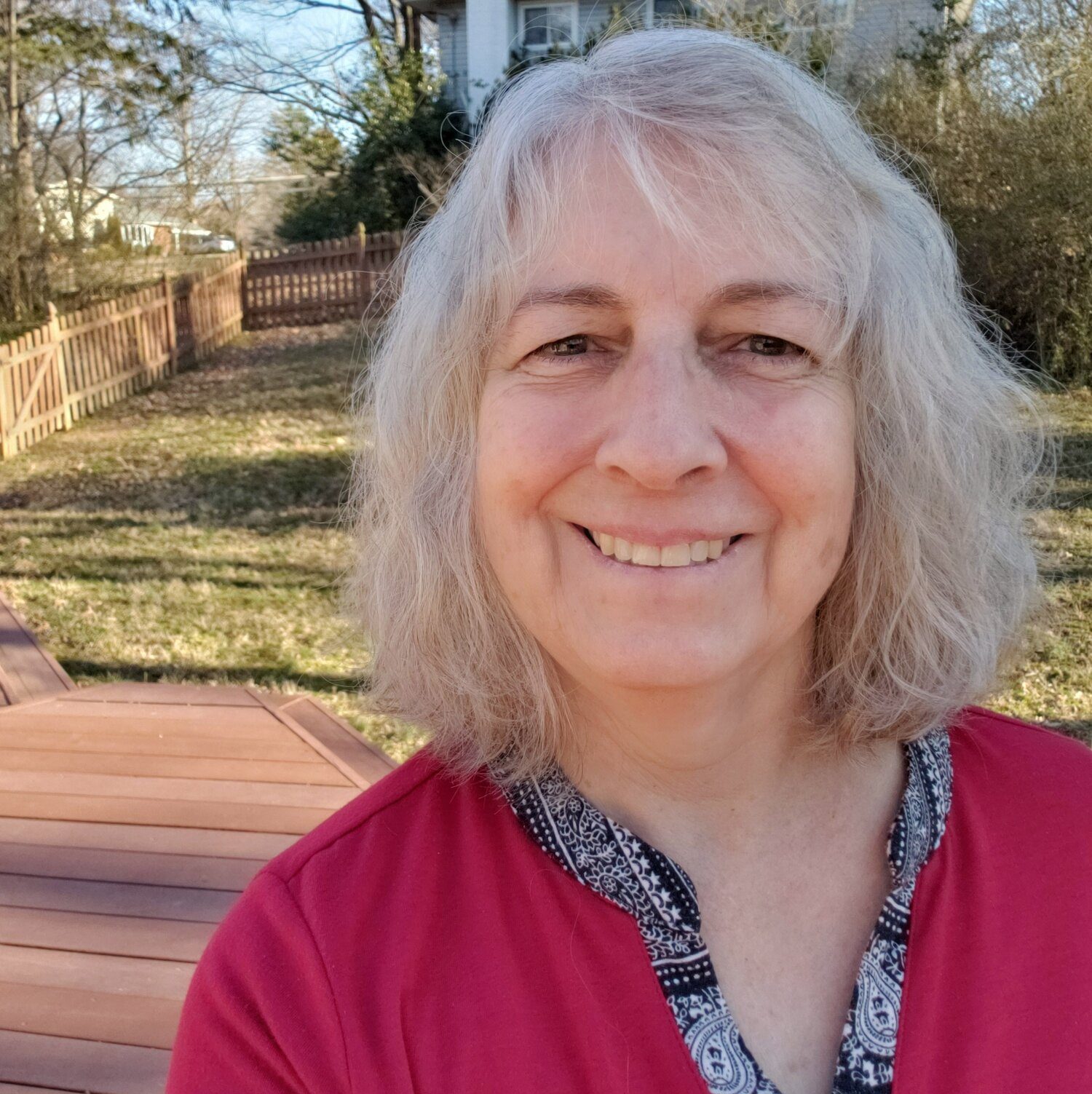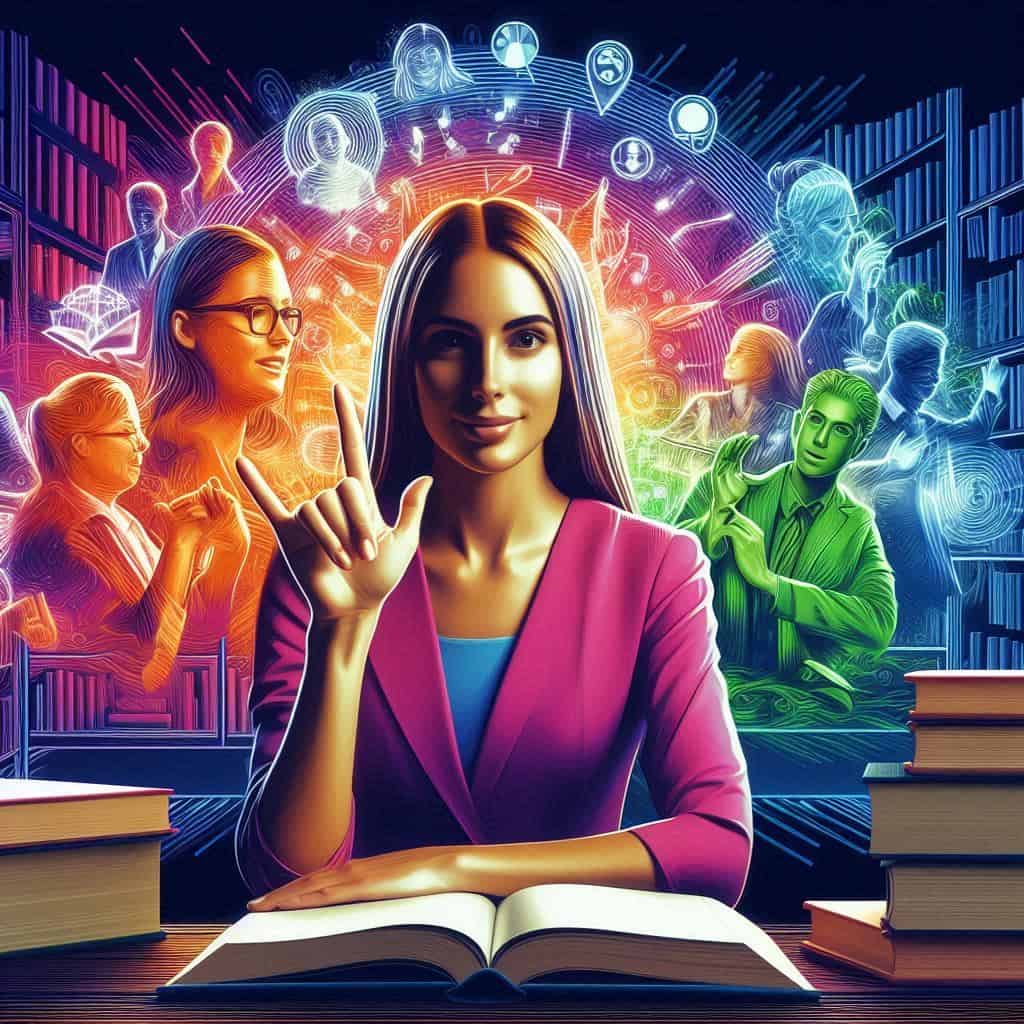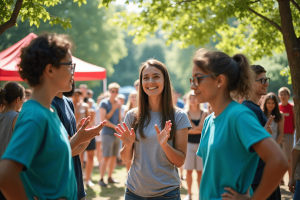
An Interview with Chris Wixtrom, Founder of ASL Access
- Posted by Cicada Sign
- Categories Blog
- Date October 14, 2024
- Comments 0 comment
We were so excited to have the opportunity to connect with Chris Wixtrom, the founder of ASL Access and creator of Read with ASL. Chris shares a bit about her background, how she became so passionate about ASL, and the motivation behind ASL Access. We hope you’ll check out these awesome resources, and enjoy learning more about Chris!
Your organization, ASL Access, is a great source of knowledge and inspiration. How would you describe it in your own words?
Thank you, Dana, for your kind words. ASL Access is a volunteer-based nonprofit organization encouraging broad access to American Sign Language in every dimension of life. I like to call this language abundance! ASL Access points out ASL resources, and with the help of Deaf and hearing volunteers, we also create unique ASL resources that we bring to the public eye through the Read with ASL YouTube channel and the websites for Read with ASL (englishbyeye.org) and ASL Access (aslaccess.org).
What is your favorite ASL resource, in addition to Read with ASL?
I can’t pick just one favorite! There are countless ASL resources I celebrate!
I’ll start with the American Society for Deaf Children (American Society for Deaf Children). This is an outstanding resource for families. “The American Society for Deaf Children (ASDC) is an organization that provides support, encouragement, and information to families raising children who are Deaf or Hard-of-Hearing.” I really appreciate and admire Bill Vicars’ Lifeprint.com website and his YouTube videos, and Garret Bose’s ASLyes.com website and his YouTube channel. These two instructors show great generosity and creativity in making their ASL resources widely accessible. Another favorite is Trix Bruce, who presents interpreter training, mentoring, ASL instruction, and ASL performing. Check out her website (Trix Bruce) and YouTube channel. I also love Sarah Tubert’s signed song presentations on her YouTube channel.
Is there anything about your own history that you’d like readers to know about, in relation to learning ASL and/or contributing to the community?
As you learn ASL, make every effort to get to know Deaf people and appreciate their culture. If you want to contribute to the community, center Deaf people.
I grew up just down the street from the California School for the Deaf in Riverside and walked past the campus on my way to and from my middle school. Observing the Deaf children and staff on the playground impressed me deeply. I saw the sustained eye contact and signing as respectful attention. I thought that hearing people could learn from Deaf people about that!
In college, I lived next door to a Deaf man, and he introduced me to his friends who kindly guided me in picking up ASL. I told my story about this experience in my article, Something Less? Something More! I was fortunate that Deaf people befriended me and helped me learn ASL. Initially, this was a social experience. But then I met the mom of a young Deaf child who had attended a residential school for the Deaf and was fluent in ASL, and I saw that his mother could barely communicate with him. This heart-breaking disconnect sparked something in me. I decided to go back to school and get a teaching credential in Deaf Education so I would be able to teach the children. Yet I always longed to help the families, too.
While attending California State University, Northridge to get teaching credentials, I worked at the nearby Sign Language Store. Many of the books gave examples of negative and paternalistic attitudes about Deaf people. One day I sat down and wrote Two Views of Deafness, contrasting a negative view with a positive one. People encouraged me to send this and other pieces I’d written to the Deaf American magazine. I did, and my work soon appeared in several issues. Then Leo Jacobs, author of A Deaf Adult Speaks Out, called me on the TTY to ask if he could share my Two Views paper at a conference. That was a thrill! Years later, his daughters helped set up an ASL Access Video Collection in memory of their dad, in Fremont, CA.
What motivated you to found ASL Access?
Well, I literally got a flash of inspiration one day! I was watching an ASL video and noted that the quality was poor. Suddenly, in my mind appeared an image of a display unit filled with wonderful ASL videotapes with lessons, stories, and all kinds of information in ASL! Maybe this kind of display could be set up somewhere? Wait … what about at libraries?
I set to work to make this happen. I searched out ASL videos from over 70 producers and purchased them for review. I also loaned videos out to Deaf volunteers for their review. At libraries, I looked up information about how to write grant applications. I soon realized that I would need to establish a nonprofit. So, in 1997, I founded ASL Access to bring ASL to libraries, so that families with deaf children, developing interpreters, and anyone interested in ASL could find free resources. However, I still had no success winning a grant. So, my family funded the first ASL Access video placement, which we donated to the Martin Luther King Jr. Memorial Library in D.C. as the Alice L. Hagemeyer American Sign Language Video Collection. It opened in June 1999, and not long after that, the librarians told me that the ASL Access materials circulated more frequently than everything else in the AV section combined!
When a grant was finally won, ASL Access placed the Laurent Clerc American Sign Language Video Collection in a branch of the Fairfax County Public Library system in Virginia. Word got out, and various people, businesses, and library Friends groups started stepping up, helping to fund specific placements. Some public, school districts, and independent libraries simply bought the collection. ASL Access acted as a liaison between those who funded the placements, ASL video producers, and libraries to place more than 5,600 videos in collections of over 200 ASL videos in each of 28 libraries nationwide. Most of the collections were named in honor of or in memory of Deaf persons.
By 2005, VHS had become obsolete, and libraries were discarding the videos. ASL video producers were slow to move to DVD, so we closed the project. ASL Access was dormant for years.
How did the idea come about to launch the YouTube channel? What went into making that possible — especially building the community of volunteers who are involved?
In 2009, I started tutoring Deaf adults at an English language school. I crafted strategies for teaching reading comprehension with ASL and the Deaf students I tutored met their educational and career goals. Word spread, bringing many new Deaf learners. This motivated me to earn my master’s in education: TESOL (Teaching English to Speakers of Other Languages).
In 2013, having studied evidence-based language acquisition approaches and generated ways to adapt these to accommodate dual languages with two modalities, I decided to design my videos to facilitate both English language learning and ASL acquisition together. Deaf educator Abbas Ali Behmanesh volunteered to be the project’s ASL presenter. I asked him to describe photos that I’d taken of activities like fishing off a pier, visiting a vet, and building a computer. In addition, I suggested that he translate my photos of “environmental print” to ASL. This is print we see in everyday life, such as product packaging, menus, road signs, advertising, banners, and safety instructions. My video composition incorporated photos, ASL photo descriptions, and related text comments that I added on the screen.
Some years later, my son encouraged me to move the videos from the website to YouTube, and he helped me start a channel. I reached out to Trix Bruce, a renowned interpreter trainer with whom I had worked as an English editor, and she kindly volunteered as an ASL presenter.
I made two errors with the channel at first. It was suggested to me that I should open each video with an introduction to the Deaf presenter and an explanation of the focus on reading comprehension. However, these sim-com intros by a hearing person were not welcomed by the Deaf community! So, I took myself off-screen and asked our Deaf presenters to introduce themselves and the video content. This was a vast improvement. The channel was originally called English by Eye to show that ASL could help with reading. Thankfully, a Deaf woman shared with me that some people in her Facebook group didn’t like associating the word English with ASL, so they didn’t want to watch the posted videos. I’m deeply grateful to her for alerting me to this, as it prompted me to come up with the name “Read with ASL” for the channel.
Over time, we found more volunteers. Some saw the videos and offered to volunteer or referred their friends. I reached out to a few individuals and asked if they would help. They wanted to be a part of this project because they appreciated the chance to help share ASL and English-language learning resources. When we decided to add voice-overs to the videos, we initially had a hard time finding volunteers. But over time, several people responded, including one mom of a deaf child. We were surprised and delighted when a woman in an interpreter training program recruited her entire cohort of trainees to volunteer voice-overs for our video, ABLE with ASL!
What do you think are some of the most exciting developments in the Deaf and hard-of-hearing communities today?
I think this is a great question to ask of Deaf people!
What advice would you give to hearing allies of the Deaf community, who want to support loved ones, friends, coworkers, or even strangers who are Deaf or hard of hearing?
I would recommend giving respectful attention to Deaf community members to find out what is most important to them. When working on a project together, be open to their input and advice. There is a lot of wisdom in the Deaf community. Encourage parents of Deaf children to learn sign language. If you have the chance, learn to sign. Do you have Deaf family members? Learn to sign. Deaf co-workers? Learn to sign. Make an effort, and stay humble. The worst things to do are to ignore Deaf people or take center stage from them. Consider yourself lucky to know them!
Anything else that we haven’t asked, but that you would want readers to know either about yourself or ASL Access?
We are still welcoming volunteers!
The Read with ASL website (englishbyeye.org) provides information about connecting ASL and reading comprehension by enhancing and expanding both ASL and English learning opportunities. There are links to the multiple-meaning word series of videos, including a link to a cumulative list of the reading comprehension sentences from those videos. There is a link to the “ASL describes life” photo description and environmental print videos which include the cumulative reading comprehension sentences. Free multiple-meaning word and verb Dictionaries are available on the site.
The ASL Access website (aslaccess.org) features articles about ASL and Deaf Education, as well as many ASL-related links.
—
At Cicada Sign, we share Chris’s passion for fostering accessibility and inclusivity through education. We believe in empowering the Deaf community by providing platforms where their voices and needs are amplified. Let’s continue supporting the vital work of organizations like ASL Access.
If you’re interested in volunteering or learning more about ASL resources, be sure to check out the following:
This interview was prepared by Dana Anderson.

W Letter in ASL
"ASL resources offer both practical skills and emotional connection. They allow hearing parents to communicate effectively with their Deaf children, creating an inclusive environment where no one feels left out." - Chris Wixtrom, Founder of ASL Access

"Supporting loved ones or coworkers who are Deaf means respecting their input, learning ASL when possible, and creating an inclusive environment. Allies should also avoid taking center stage; instead, they should amplify the voices of Deaf individuals." - Chris Wixtrom, Founder of ASL Access



